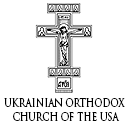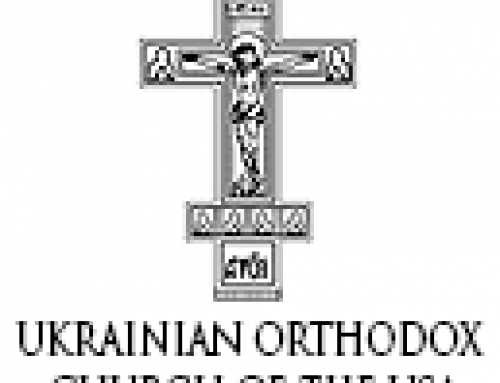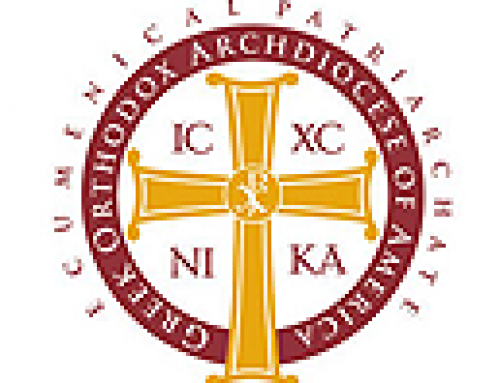This post was originally published on this site
The procession of icons during Sunday of Orthodoxy Vespers is one of the most memorable events of the entire Liturgical year, as the holy icons we normally gaze upon from afar are brought into our midst reaffirming the proclamation of the 7th Ecumenical Council. Like many of the Church’s teachings, there is a significance to the timing of this commemoration and also different levels of understanding: on one hand we have the definitive historical context, but there is also practical reason that can benefit us every day during Lent. Last Sunday we venerated the likeness of the saints who are to be our models over the course of the Great Fast and beyond. Our re-dedication to a spiritual life and a more Godlike existence is made possible by embracing the lessons these saints taught.
Today we encounter and commemorate St. Gregory Palamas, known as a theologian of Hesychasm – the mystical tradition of experimental prayer in the Church. The timing of this commemoration is no accident -we will need the coming weeks of quiet contemplation in order to develop these skills and add them to our spiritual toolkit.
While we can never fully comprehend God in His uncreated and incalculable Essence, St. Gregory explained that we can become more “God-like” by experiencing certain “energies.” Simply put, just because we can’t describe what God “is” doesn’t mean we can experience His existence. Our devotion to continued prayer sharpens the senses in order to attain a level of spiritual awareness which allows us to experience the Uncreated Light – the very energies of God that are responsible for the existence of all life. Devotion to these teachings provide us with a model and offer guidance in adopting the practice of continual prayer, or contemplation, in our daily lives. On the first two Sundays of Lent, the Church makes manifest a vision of God’s grace that the prophets of the Old Testament sought to experience. By emulating the spiritual discipline of St. Gregory Palamas we are given the opportunity to lift up our eyes to gaze upon that same divine vision.
St. Gregory was born in 1296 and entered the monastic life at the age of·20. His path to monasticism was interrupted by the invasions of the Turkish armies, so he fled Mount Athos to settle in Thessaloniki on the east coast of Greece. He was then ordained to the priesthood. St. Gregory now straddled the line between a life of a monk and that of a priest: laboring to attain spiritual perfection during the week and also ministering to his parish community. Through his steadfast devotion to these dual disciplines, he brought the practice of continual prayer, normally found behind the walls of a monastery, out into the world. He quickly realized that his own personal spiritual life was further enhanced and strengthened by engaging with the public. He recognized that fact we can have a relationship with God through communal life of the monastery and also by personal efforts made in the world.
St. Gregory’s unique place in the Church offers a certain visibility to the mystical tradition of Hesychasm and also an opportunity to articulate the benefits of this practice, instructing believers why they should adopt it in their own lives. We can and should utilize the remaining weeks of Great Lent as an opportunity to develop these skills, in hopes of maintaining this way of life even after celebrating Pascha. The lifestyle changes we adopt during the Fast, such as making a renewed effort to pray, allows us to strip away the inconsequential distractions in our lives in order to attach ourselves to Christ and fully experience the victory over death through His Resurrection. The solemn journey to Pascha is an adjustment our priorities but it becomes a joyous and transformational experience when we realize the distractions we gave up cannot compare or replace the benefits of spiritual aesthetics. Walking on this divine path offers personal and spiritual development but more importantly ascends to God the Father who raises us up into Paradise and eternal life.
In the life of St. Gregory Palamas, the Church provides us another holy witness to Good News of the Gospel: The God of the Orthodox Church is not of this world. Even though He walked upon the same ground, Jesus Christ is unlike any of the great philosophers the world has ever produced, far eclipsing the likes of Socrates or Plato.
For Jesus Christ, the Son of God, is the embodiment of Divine Wisdom, the same wisdom that brought existence into being, the same wisdom Socrates and Plato spent their lives searching for.
As we commemorate this second triumph of Orthodoxy, we must now again affirm our rejection of the spirit of the world that has rejected God, so that we may become servants of the true wisdom of God, the Only Lover of Mankind. Now is time for us to take up the ascetic disciplines and submit ourselves to Christ’s Holy Church, so that under her guidance we can continue our path to ascendancy.
In His Light, we see Light.
In Him, we see God.
In Him, we come to know the inner essences of the world.
In Him, we come to know our own essence – created in His image and likeness.
In Him, we become partakers of God and communicants of life eternal.
Amen.
Fr. Myron Oryhon



